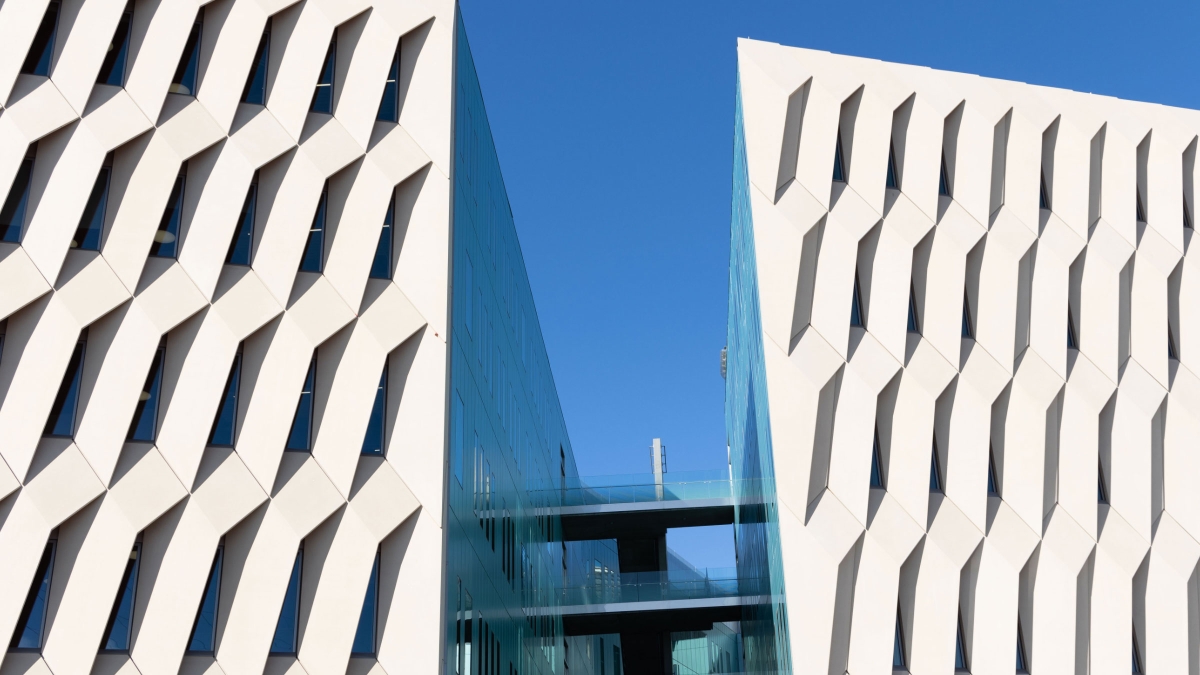Editor's note: This story originally appeared in the spring 2023 issue of ASU Thrive magazine.
The desert is a place that tells stories. Petroglyphs. Tire tracks. Paw prints. Who was here. What they did. And so it is with the Rob and Melani Walton Center for Planetary Health, a building of the desert.
The building is home to the Julie Ann Wrigley Global Futures Laboratory, the Global Institute of Sustainability and Innovation, the Rob and Melani Walton Sustainability Solutions Service, the College of Global Futures, the School of Sustainability and the Institute of Human Origins.
The skin
The building is on track for LEED V4 Platinum-certification and clad in a shell of glass fiber-reinforced concrete panels that absorb and store less heat. The panels’ design is inspired by a saguaro’s orientation to the sun. South-, east- and west-facing windows are heavily shaded by the angled concrete panels, while the north-facing windows are barely covered.
A gathering place
The site has long been a meeting place. Today, it’s one of the busiest intersections in the state at the corner of East University Drive and South Rural Road in Tempe. A thousand years ago, the Akimel O’Odham and the Piipaash people brought foods like mesquite pods here. There was a foot path and, later, a stagecoach route. Waters flowing through here once powered the Hayden Flour Mill.
Climb the steps and traverse history from the ancient to a thriving future. After the Ancient Technology Lab on the first floor, on the second floor, the Lucy skeleton comes into view — one of the oldest known human ancestors, discovered in 1974 by ASU paleoanthropologist Donald Johanson. Going up takes you into interactions with scientists across disciplines working to create solutions to climate challenges.
A geode
The concept behind the building is a geode — hard and crusty exterior, but in the interior courtyard, there’s an abundance of light and sparkling glass. “When you crack the geode open, there’s all this excitement, there’s all this kind of reflection happening inside the geode.” The interior is also seen as a riparian area, with water flowing through and cool blue walls inspired by the Havasu Falls in the Grand Canyon.
Learn more about the building and the work of ASU’s Global Futures Laboratory at globalfutures.asu.edu.
Top photo: The area near the corner of University Drive and Rural Road, where the Rob and Melani Walton Center for Planetary Health now stands, has been a crossroads for the region since ancient times.
More Science and technology

From food crops to cancer clinics: Lessons in extermination resistance
Just as crop-devouring insects evolve to resist pesticides, cancer cells can increase their lethality by developing resistance to treatment. In fact, most deaths from cancer are caused by the…

ASU professor wins NIH Director’s New Innovator Award for research linking gene function to brain structure
Life experiences alter us in many ways, including how we act and our mental and physical health. What we go through can even change how our genes work, how the instructions coded into our DNA are…

ASU postdoctoral researcher leads initiative to support graduate student mental health
Olivia Davis had firsthand experience with anxiety and OCD before she entered grad school. Then, during the pandemic and as a result of the growing pressures of the graduate school environment, she…







